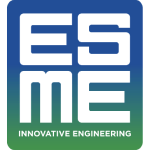To create a 3D model of the aortic arch
An ESME Sudria student project, to create a 3D model of the aortic arch
Thomas Brasey and Sylvain Rajkoumar–students in the ESME Sudria Emerging Technologies major, class of 2019–worked on a final project to create a 3D model of the aortic arch. After many months of work, Thomas and Sylvain won a prize in the first annual ESME Speed competition, for this innovative project that will be very useful to healthcare professionals.
The name of your project is “3D modeling of the aortic arch, to assist with pre-operative planning in interventional neurology.” What does that mean?
Thomas: To put it simply, this project required us to create a 3D model of an artery–the aortic arch, which is located just above the heart–to help neuro-radiologists to better prepare their interventional neurology treatments for conditions such as strokes and aneurysms, or just to observe the blood vessels in the brain. During these medical treatments, the doctor has to insert a catheter–basically a small camera in a tube–into the patient’s femoral artery, through a small incision in their thigh, and then thread the tube through the artery into the veins that we’re looking at, in the brain. The only problem being that, along the way, there’s a more complex path to take when you go through the aortic arch. Using MRI images, the surgeon does calculations ahead of time, to define what that artery is like, so that they can choose the correct type of catheter and how to position it. That’s where we get involved: because the traditional method takes a lot of time and can sometimes be even more difficult in the emergency situations that surgeons might be working in, that can result in incorrect data. During the procedure, the patient is under general anesthesia and is being X-rayed so that the catheter can be located in real time. Precious time is being lost, and that’s even more critical in an emergency situation where the lost time can result in a worse outcome for the patient. So we get involved before the procedure starts, to help it go more successfully.
How did you get interested in this project?
Sylvain: Well, last year, our supervising professor Yasmina Chenoune had supervised a final project to track the path of a catheter, and that was the starting point for our work. At the start of our project, she sent us a set of MRI images that had been taken by the MRI machine. Our goal was to compile those images and extract the ones that interested us–the images of the aorta–and do all kinds of things to allow doctors to plan their procedures more effectively through this 3D modeling.
Thomas: We weren’t the only ones working on the project, because we worked with a startup, Basecamp Vascular, that was finalizing an active catheter project. Catheters are usually passive, meaning that you have to move them manually through the artery. The advantage of an active catheter is that you can use a joystick to move it. We also worked with the Rothschild Foundation Hospital, a hospital specializing in neurology and ophthalmology.
And how does this device work for doctors?
Thomas: The doctor simply has to position a few cursors, and set a segmentation threshold around the desired part of the artery, and then it takes 5-10 minutes to do the modeling. That’s if you do the procedure on a standard PC like the one we used. But if you use a more powerful computer, it could go even faster, taking only a few minutes. That’s a real time savings.
What did you like about working on this project?
Thomas: Being able to connect our area of expertise with something concrete, in the real world, something we are passionate about and that helps society: the medical field. It’s very gratifying to develop a working project that can help health professionals.
Sylvain: It also allowed us to meet doctors, specifically doctors at the Rothschild Foundation Hospital, to better understand what they might experience during these procedures–the stress and the time that might be involved.
And what was your biggest challenge?
Thomas: Planning! We started with pictures, and from that we had to try to envision a piece of software that would be easy for doctors to use. In the end, it’s like explaining this project to people who aren’t engineers or doctors. You have to adapt it to the end user.






